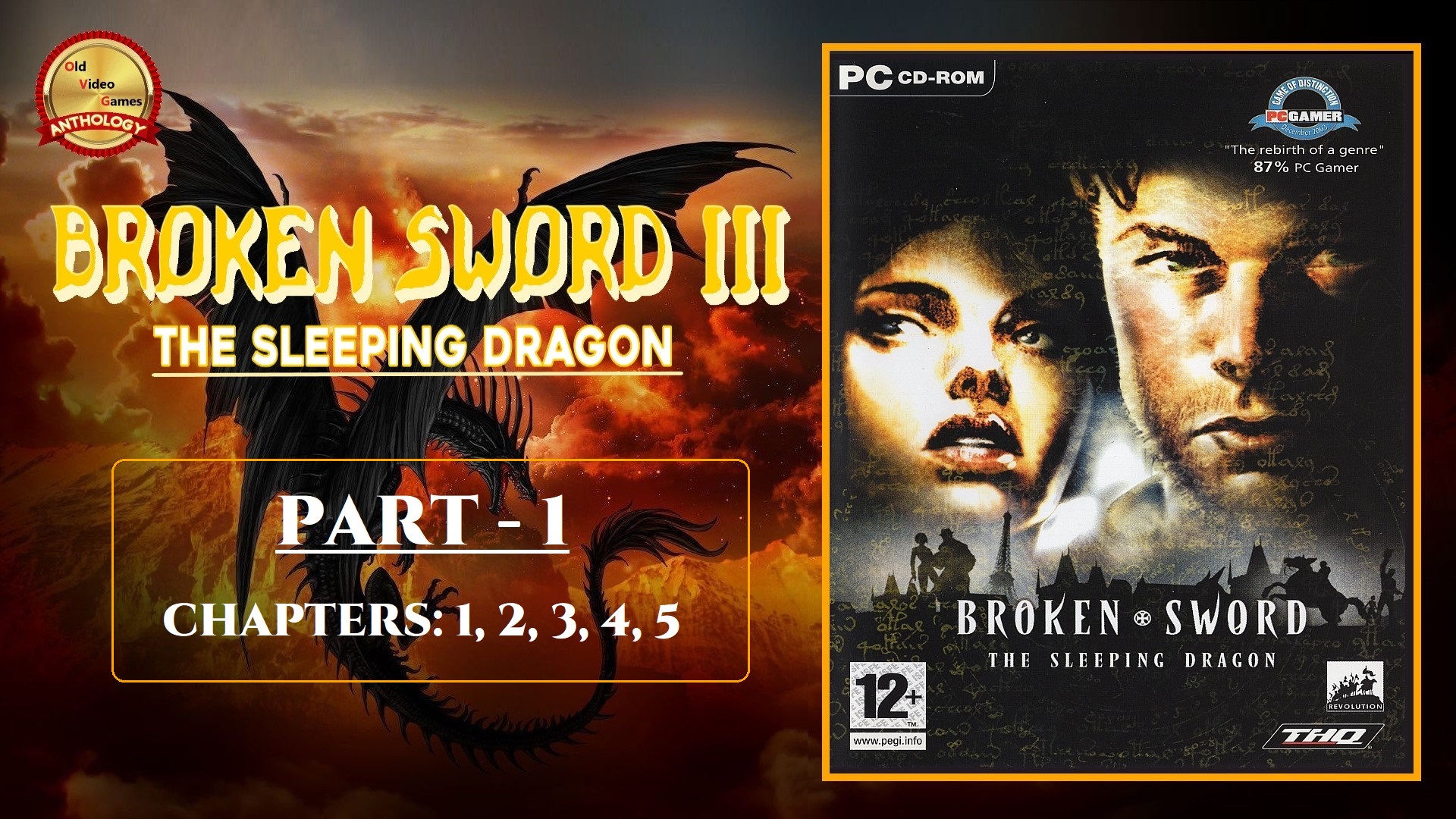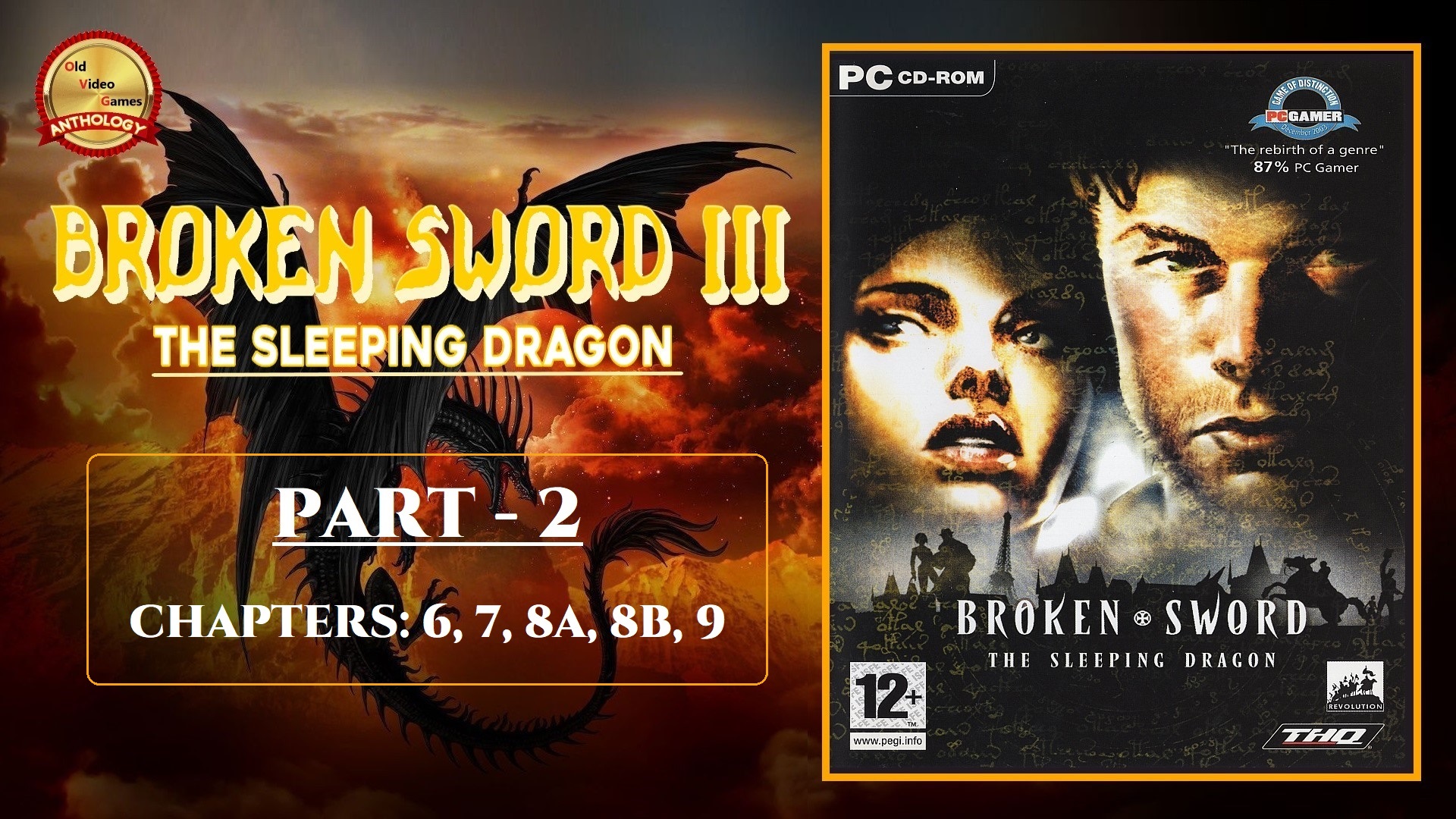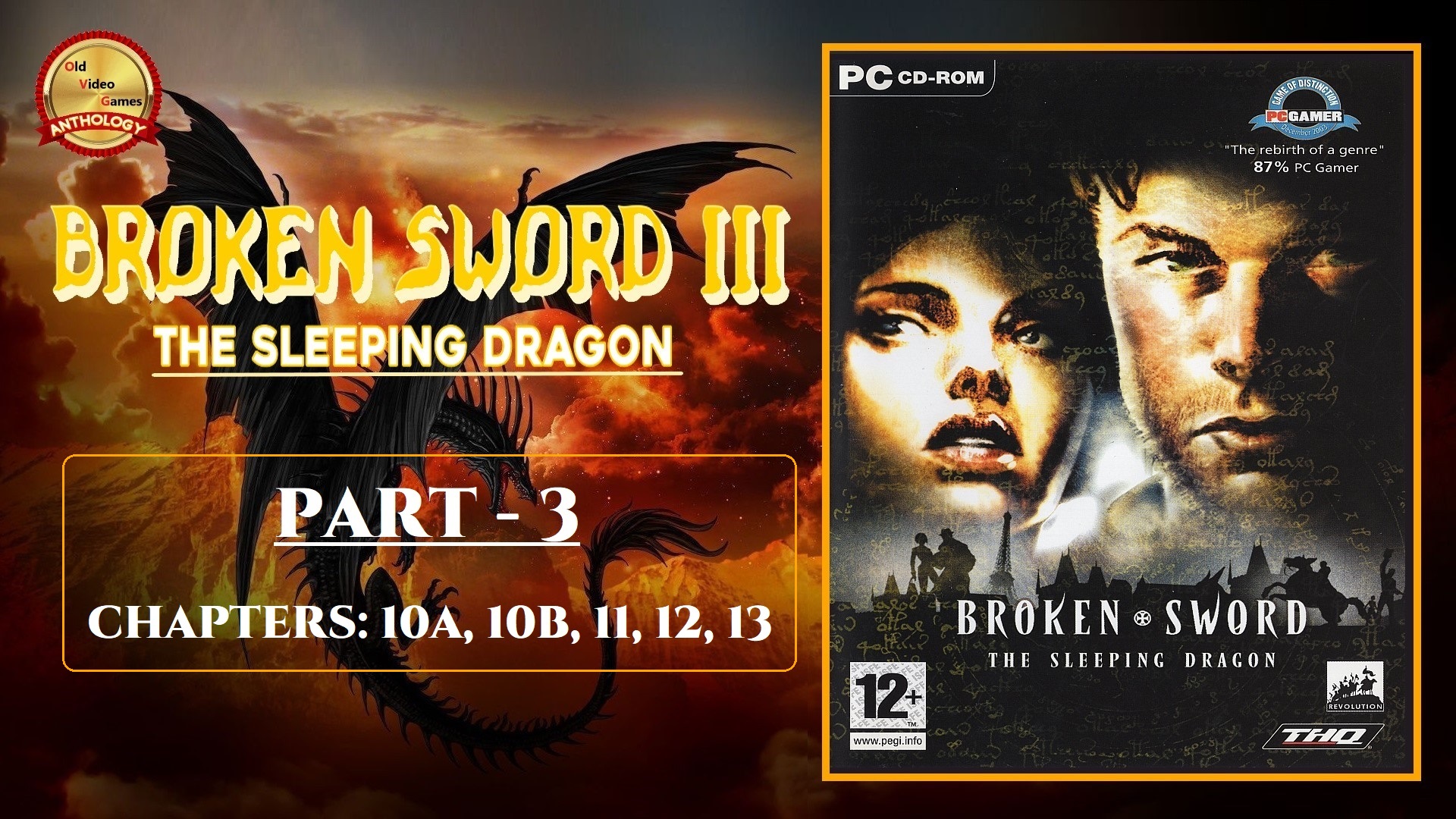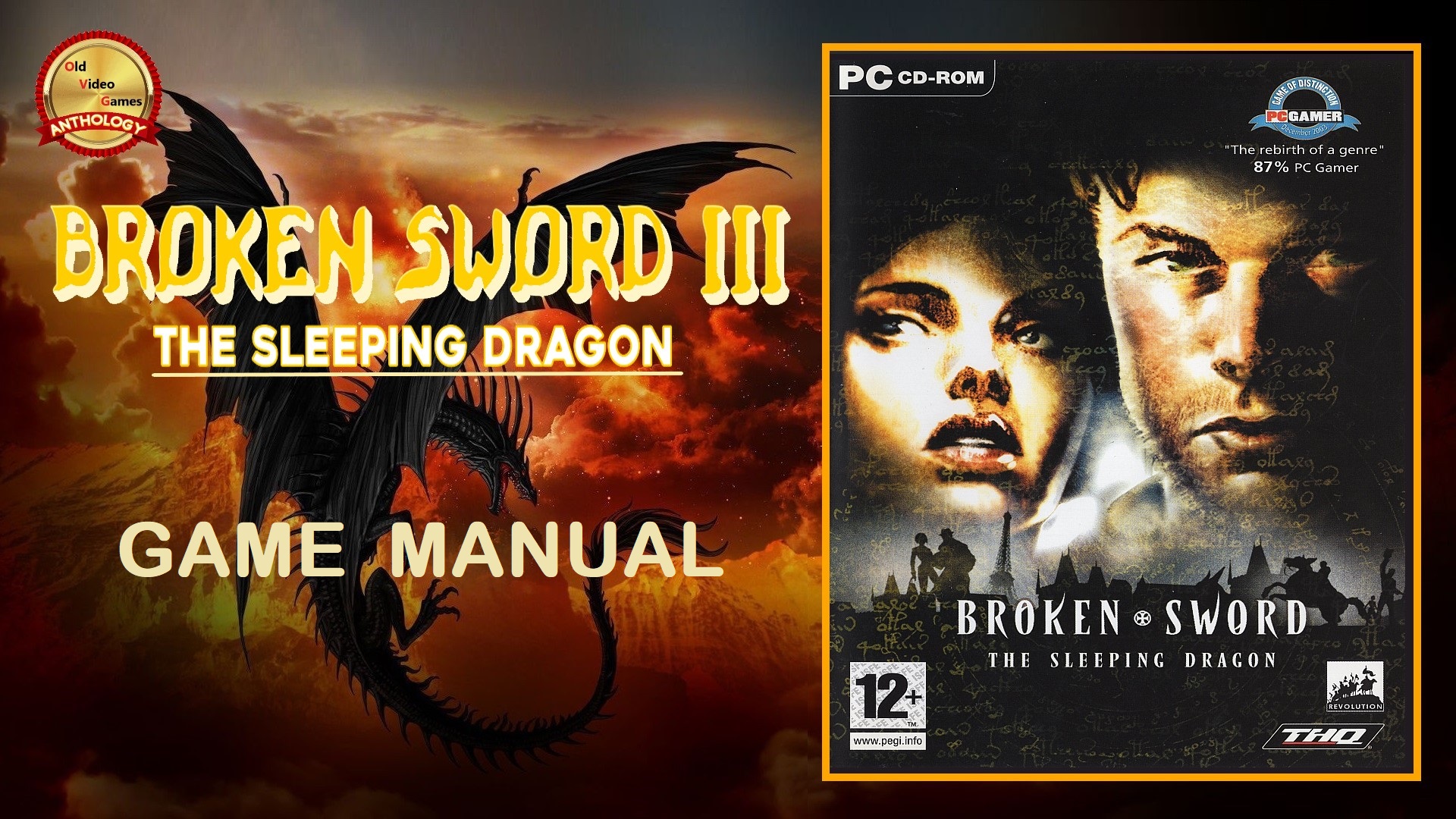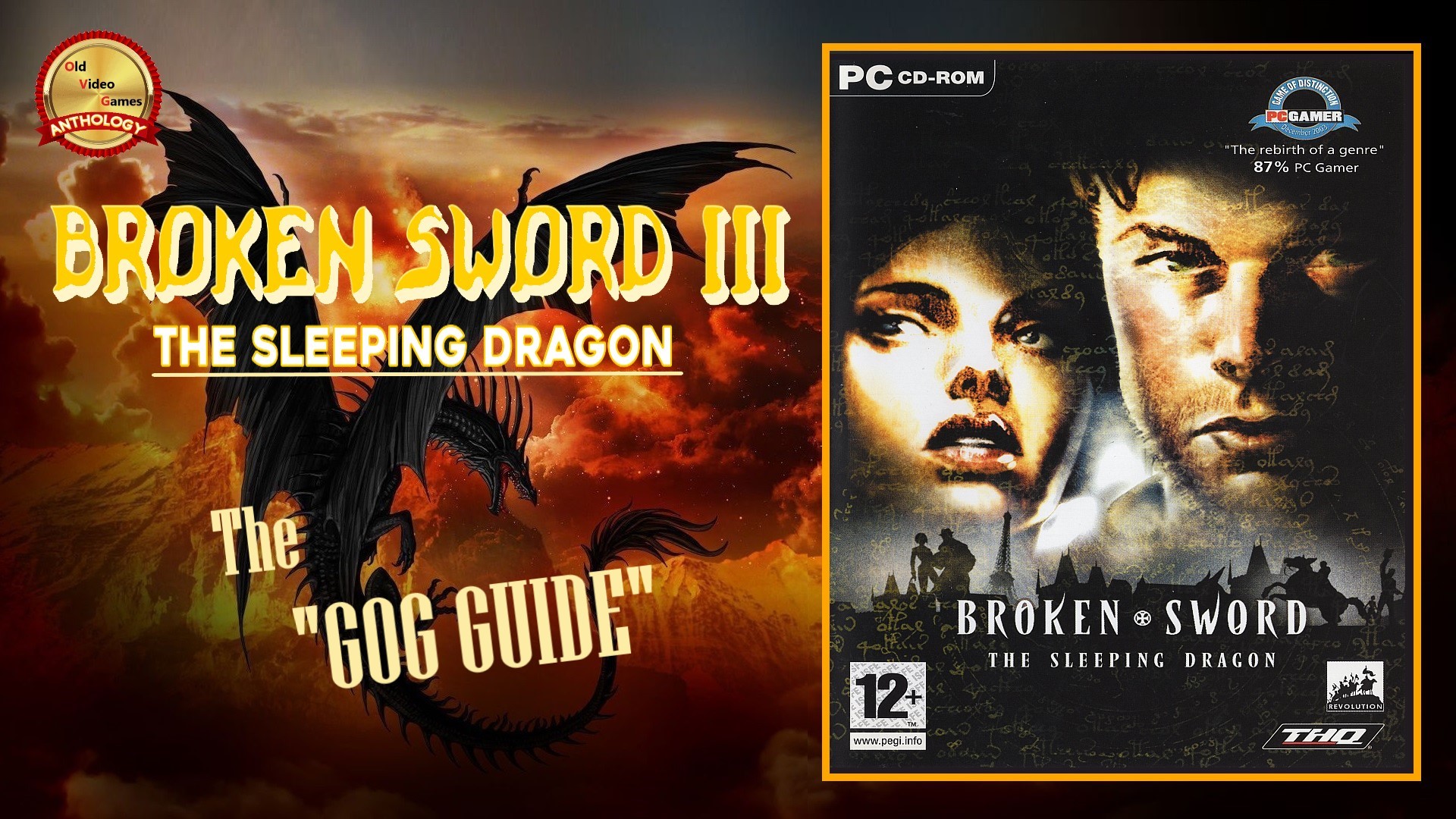|
Date: 14 November 2003.
Developer: Revolution Software.
Publishers: EU: THQ, NA: The Adventure Company, JP: Marvelous Entertainment.
Director: Charles Cecil.
Producers: Steve Ince, Michael Merren.
Writers: Charles Cecil, Neil Richards, Steve Ince, Tony Warriner, Jonathan Howard.
Composer: Ben McCullough.
Series: Broken Sword.
Engine: RenderWare.
Platforms: Microsoft Windows, PlayStation 2, Xbox.
Genre: Adventure Game.
Mode: Single-player.
Summary: The murder of an underground hacker in Paris is just the beginning of this extraordinary adventure for George Stobbard and Nico Collard in the highly
anticipated BROKEN SWORD III. Powerful seismic events are shaking the world. An Ancient Conspiracy, the Secrets of the Templars, and a fiendish source of pure
Evil are responsible. From the jungles of the Congo to the deceptive calm of the English West Country and gothic castles time is running out for the Earth and
only George and Nico can save it.
Broken Sword: The Sleeping Dragon is an adventure game released on Microsoft Windows, Xbox and PlayStation 2 in 2003, while in Japan, the PlayStation 2 version
(released only in Europe and Japan) was released in September 2004. A Nintendo GameCube version was planned, but was cancelled. It is the third instalment in
the Broken Sword series, released six years after the previous instalment, Broken Sword II: The Smoking Mirror. The Sleeping Dragon moved the series to 3D
graphics and is the only game in the series not to use a point and click interface. The player again assumes the role of George Stobbart, an American patent
lawyer who flies to the Congo to write a patent for a scientist who claims to have found a source of unlimited energy.
The idea was first discussed in 2000. To make the game feel like a film, Revolution brought in a cinematic consultant, Bob Keen, who made sure the game
conveyed emotions and atmosphere appropriate for each scene. The game was originally planned to have similar cartoon-quality visuals as its prequels, but
the developers decided to aim at a style similar to Japanese animated films. Unlike the first two Broken Swordgames, which used the Virtual Theatre engine,
The Sleeping Dragon was built with the RendderWare engine. The game's music was composed by Ben McCullough and Rolf Saxon returned to voice George Stobbart.
The game has received highly positive reviews. Critics praised the game's story, writing, humour, cinematic feel, and graphics. The game's music was also
lauded. Criticism focused primarily on the control interface and repetitive puzzles. According to Charles Cecil, the game sold a few hundred thousand
copies.
The gameplay in Broken Sword: The Sleeping Dragon is a departure from previous instalments in the series, using a direct control interface. The player guides
George Stobbart's movements with a keyboard or gamepad, while Nicole Collard is also a playable character at certain times. George must collect objects that
can be used with other collectable objects, parts of the scenery, or other people in the game world in order to solve puzzles and progress in the game.
George can engage in dialogue with other characters through conversation trees to gain hints of what needs to be done to solve the puzzles or to progress
the plot. The player has action choices in the bottom right of the screen - there are four circles with anywhere from one to four actions available at any
time; the player selects the desired action with the corresponding key. As in the first two Broken Sword games, in the Sleeping Dragon player character death
is possible.
|
